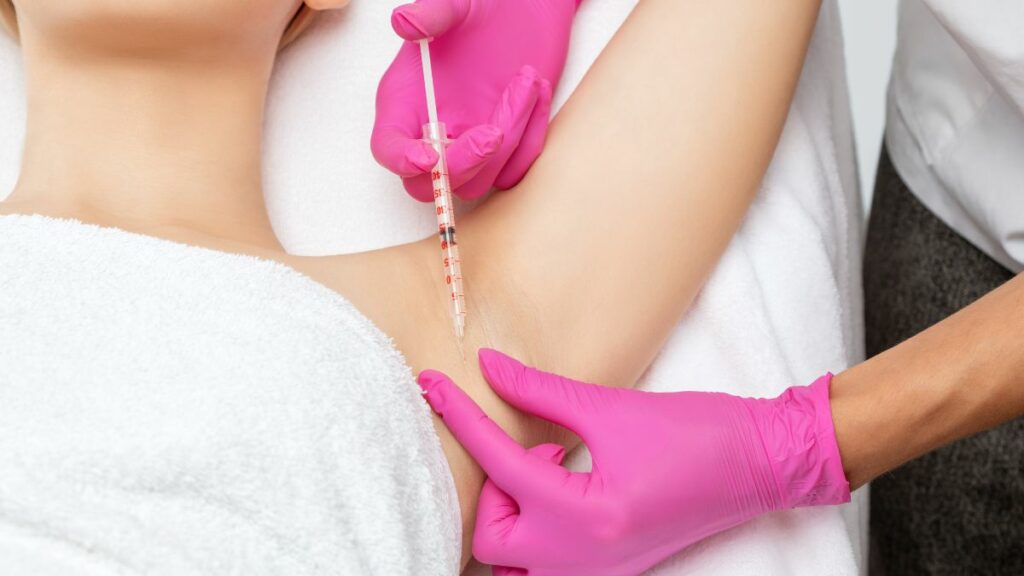Few things are as embarrassing as sweat stains and body odor caused by excessive sweating. Thankfully, most people can avoid this embarrassment by using antiperspirant deodorant. However, some people suffering from a condition called hyperhidrosis struggle with sweating so pervasive that standard methods are not enough. These individuals may have to seek more aggressive treatment, such as Botox injections.
What is hyperhidrosis?
Hyperhidrosis is the name of the condition of excessive sweating, often not connected to heat or exercise. “Although sweating is a necessary function of the human body for temperature regulation, excessive sweating can be uncomfortable and disruptive to day-to-day activities,” explains Alex Medeiros, General Manager of Orlando medspa LightTouch Med Spa Orlando. “Sometimes, hyperhidrosis can be the sign of a more serious condition, but if a doctor determines that your condition is primary hyperhidrosis — not caused by another underlying condition — treatment options are available.”
Treatment for primary hyperhidrosis becomes necessary when sweating begins to interfere with one’s ability to conduct normal daily activities. Some patients’ sweating may reach such excessive levels that they frequently “sweat through” several clothing items daily. Should one’s condition reach this point, it could lead to frequent embarrassment and additional, needless spending on laundry. Furthermore, those who sweat excessively can be more prone to acne or skin infections.
The use of Botox to treat hyperhidrosis
One hyperhidrosis treatment that has shown great potential is the administration of Botox in affected areas. Although Botox injections have historically been considered a cosmetic procedure, the FDA has approved the compound for several medical uses, including the treatment of excessive sweating. “Botox works by targeting a patient’s sweat glands, selectively turning them off to result in a normal appearance without wetness,” Medeiros explains.
Those suffering from excessive sweating should seek care from their doctor if sweating begins to disrupt their daily routine or cause emotional distress or if they begin experiencing a sudden and inexplicable onset of excessive sweating. After determining that the hyperhidrosis is not caused by another condition that must be treated separately, doctors may suggest Botox treatment, which can be conducted in an outpatient setting such as a medspa, where you would be able to find the professionals and setting suitable for your Botox sessions.
The most frequent site of Botox treatment for hyperhidrosis is the underarms, as this is one area more commonly prone to excessive sweating. “Botox can be used as a treatment for anywhere that hyperhidrosis may occur, such as the palms, soles, or even the face,” says Medeiros. “However, the trained medical professional administering the treatment will advise you of the risks, as there are sometimes complications associated with this treatment in other areas.”
Botox treatment is administered using a small needle with a shallow injection, meaning that only minimal topical numbing agents must be applied. The discomfort associated with these treatments is generally mild and temporary. Treatments may be more uncomfortable in areas with thicker skin, such as the palms, but side effects are typically minimal and short-lasting.
Common Signs of Developing Diabetes(Opens in a new browser tab)
Primary hyperhidrosis is a difficult medical condition because it is difficult to identify any specific cause for it, and as such, it can’t be completely cured. However, treatments such as Botox injections have been proven to offer patients long-term relief, with the positive effects often lasting as long as 6 to 12 months. “If you are affected by excessive sweating daily, Botox treatment can allow you to return to your normal life and activities,” says Medeiros.
